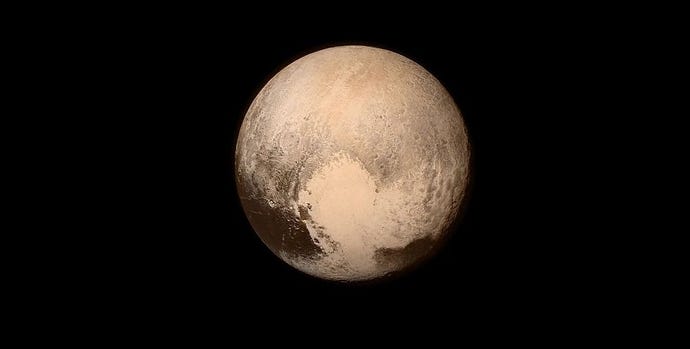Elite: Dangerous devs want to do more than just "paint a new surface texture" on Pluto
Until a topographic map is laid out for Pluto, Frontier Developments won't change the look of the planet in Elite: Dangerous. The studio wants to do more than just "paint a new surface texture" on it.
According to the latest news letter, Frontier said it's pleased by how closely its simulation of both Pluto and its moon Charon matched in a sense.
The game take place in the year 3301, though, and the data used for both astral bodies is a projection of what the dwarf planet and its closest moon would look like during said timeframe.
"[This} which means around five more orbits and five more heating/cooling cycles between today and the era of Elite: Dangerous," said the firm. "It's possible the renewed surface [the heart-shaped spot on Pluto] could spread to cover the entire body by 3301."
The developers use real world data in Elite: Dangerous "whenever it's available to make objects as real as we can make them," according to assistant art director Jon Bottone.
"With a few exceptions, the surfaces you see are derived from the custom simulation based on things like the distance from the star and Newton's second law, the object's mass, temperature, composition, surface age, atmosphere, chemistry, tidal heating, radiative heating, impacts from other bodies during formation and so forth.
"For familiar objects like Earth, Mars and our moon, we can use real height map data to build a truly accurate model of the surface. Those height maps are invaluable to making familiar planets look real, and if NASA is able to release that data for Pluto and Charon – or any other planetary body –we should be able to incorporate that in the future too."
Frontier said it will leave Pluto and Charon as each are depicted now until it has the "necessary data" in order to create a more accurate surface for players to land on.
To give you a better idea of what Frontier wants as far as topographic information, have a look at this rather interesting "Hiker's Map" of Mars posted on Space.com which is based on data collected by the ESA's Mars Express spacecraft.










